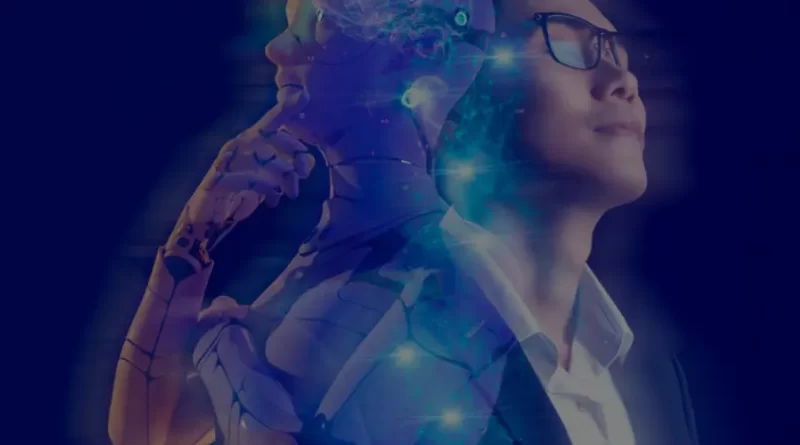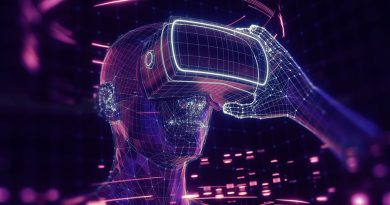Exploring the Disruptive Power of Generative AI in Video Platforms
Discover the astonishing progress in generative AI and its profound impact on various creative domains. From video content platforms to art and music, the potential of this transformative technology is vast. Delve into the opportunities it presents and the ethical challenges it entails, as we embrace the future of generative AI and unlock new frontiers of creativity and innovation.
Generative AI revolutionizes the content creation landscape by harnessing the power of artificial intelligence to generate text, images, audio, and video through predictive modeling. By leveraging massive datasets, this technology empowers innovators, researchers, and professionals in the field to explore new frontiers in content generation. Specifically, generative pre-trained transformers (GPT) serve as the foundation for various applications, such as transforming text descriptions into coherent paragraphs, producing lifelike images using models like Stable Diffusion, composing music with MusicLM, and generating videos through Imagen Video.
The advent of generative AI marks a significant shift in content creation, enabling a more democratic approach to creative expression. Notably, its potential impact on the video content industry is profound. While smartphones and social video platforms have already democratized video creation to some extent, generative AI can further level the playing field by providing accessible tools to a wider range of creators.
Consider the dominant players in this domain: Netflix, TikTok, and YouTube. Although each platform possesses unique content types and business models, they all thrive by incentivizing creators to develop captivating content, matching such content with the appropriate audience, and identifying the key drivers of engagement. These interconnected elements create a powerful flywheel effect that has propelled these platforms to immense success. However, the momentum of this flywheel is starting to wane.
Generative AI, with its ability to generate novel and compelling video content, has the potential to exacerbate the challenges faced by these platforms. It introduces a new value chain in video content creation, disrupting the status quo and reshaping the industry dynamics. As a result, the traditional strategies employed by Netflix, TikTok, and YouTube may require reevaluation and adaptation in the face of this emerging technology.
Generative AI represents a transformative force in content creation, empowering technology innovators, researchers, and professionals to unlock new possibilities. Its impact on the video content industry is particularly noteworthy, as it fosters a more inclusive and dynamic ecosystem. As Netflix, TikTok, and YouTube navigate this evolving landscape, embracing the potential of generative AI will be essential in remaining at the forefront of content creation innovation.
Why Netflix, TikTok, and YouTube Face Troubles in the Digital Landscape
Netflix, TikTok, and YouTube have experienced significant success in the digital realm, leveraging their prowess in determining content relevance and driving user engagement. However, despite their achievements, these platforms face two crucial challenges in their pursuit of delivering captivating content:
Extracting Meaningful and Precise Features
While categorizing videos into genres, cast, and duration provides some insights, these labels can be broad and subjective, posing difficulties for algorithms to learn effectively. Although specific details like scripts and shot lists offer precise data, the sheer volume of information for each video hinders efficient processing.
Overcoming Creation Barriers
Traditional, closed content production models, akin to Hollywood-style productions, are both expensive and time-consuming. For instance, in 2022 alone, Netflix invested a staggering $17 billion in content creation. Netflix’s co-CEO, Greg Peters, acknowledged the need for consistent releases to retain viewers but admitted the challenges of accomplishing this feat within their existing production framework.
An alternative model employed by TikTok and YouTube involves open, user-generated content creation. This approach proves to be relatively cost-effective and fast-paced. However, it necessitates establishing incentives that balance three often-conflicting objectives: retaining influential creators, motivating new creators, and retaining and expanding the viewer base. Platforms operating in this space strive to generate a substantial volume of engaging content, primarily relying on a small number of popular creators, thus leading to intense competition for incentives. TikTok has been rumored to engage in “heating” tactics to manually promote videos, while YouTube Shorts has reduced the threshold for creators to earn revenue, now requiring only 1,000 subscribers compared to TikTok’s previous threshold of 100,000 followers.
The challenges outlined above help explain the demise of the short-lived streaming platform, Quibi. Quibi combined the weaknesses of all three major platforms by heavily relying on a closed, Hollywood-style production system. It invested in expensive creators and actors instead of empowering individual creators as YouTube and TikTok have successfully done. Unfortunately, this strategy resulted in lackluster content that failed to resonate with its target audience of Millennials and Gen Z. Surprisingly, Quibi also missed an opportunity to utilize AI in content production, although it did employ AI for recommending viewers what to watch.
Thus far, no platform driven solely by human decision-making has managed to overcome both of these challenges. However, a potential solution lies in the realm of Generative AI. This emerging technology has the potential to revolutionize content production, enabling platforms to determine what videos to create, how to create them, and whom to showcase them to. This innovative approach paves the way for a new generation of AI-enabled platforms that can reshape the digital landscape.
Next Generation of Generative AI Platforms
Envision a world where creativity knows no bounds. Picture this: a creator simply enters a text description, such as “Two people are sitting in an Art Deco café. It’s snowing outside. One of them bites into a wedge of Swiss cheese and remarks, ‘I’m creatively constipated!'” Within moments, a hyper-realistic, live-action video complete with sound is generated and reaches billions of viewers. But this isn’t just any video platform; it’s a generative AI platform that revolutionizes content creation and consumption.
In this extraordinary scenario, not only do we have unprecedented insights into viewership metrics like watch duration, skips, likes, shares, comments, and searches, but we also have access to the precise input used to create each video. This addresses two significant challenges faced by existing video platforms. Firstly, it offers a much more precise description of the video through the input text prompt. Secondly, it significantly lowers the barriers to content creation, making it as simple as typing out one’s imagination. Gone are the days of relying on video editing software or even hiring actors.
This seemingly magical platform is the culmination of three powerful AI programs working in harmony. AI #1 generates the video based on the provided text input. AI #2 matches the video with the most suitable audience, ensuring optimal reach and engagement. Lastly, AI #3 leverages the resulting engagement data to guide creators on their next creative endeavors. While a more rudimentary version of this production model is already generating content, as demonstrated by the Seinfeld parody sitcom “Nothing, Forever” and its staggering 100,000 followers, the full potential of generative AI platforms is yet to be realized.
The impact of such a generative AI-driven video platform on the economy cannot be understated. Historically, only a small fraction of popular content on platforms accounted for a significant portion of their success, leaving a vast amount of less popular content struggling to gain traction. However, a generative AI platform has the potential to supercharge the success of popular content by empowering creators with algorithmic recommendations for their next projects. Simultaneously, the lower barriers to creation will enhance the profitability of the remaining content.
The big question now is how the leading incumbent platforms will adapt to this transformative shift. Netflix, known for its resistance to an ad-supported model, may face challenges in embracing such a radical change. TikTok, on the other hand, is the closest to embodying the characteristics of a Generative AI Platform, both in terms of its business model and technological capabilities. Nevertheless, it has recently come under regulatory scrutiny in the United States. Meanwhile, YouTube has been actively striving to compete by introducing Shorts and enhancing creator incentives. Supported by Google’s advanced AI capabilities, YouTube has a favorable position. However, Google’s track record suggests it may be slower to embrace the commercial opportunities presented by the generative AI space.
The future of content creation and consumption lies within the realm of generative AI platforms. As technology continues to evolve and the boundaries between creators and viewers blur, a new era of limitless creativity and engagement awaits us. The possibilities are truly boundless, and the economic impact will reshape the digital landscape forever.
Unleashing New Frontiers of Creativity of Generative AI
The realm of generative AI has experienced an astonishing surge in both technological advancements and public awareness. While we may not yet possess the capabilities to generate flawlessly realistic, live-action videos directly from text inputs, the availability of such breakthrough technology remains integral to the realization of a new transformative platform.
The Multifaceted Potential
Even with the advent of this technology, text inputs might not always offer precise definitions for video creation. As a result, we are likely to witness the emergence of a multitude of similar, yet distinct, videos as creator-viewers craft analogous texts. This poses questions about how the platform will navigate the potential conflict of interest between itself and the creators. Moreover, how can the platform effectively mitigate the risks associated with unlicensed deep fakes, propaganda, and the dissemination of false information?
Revolutionizing Video Content Platforms
Notwithstanding these considerations, it is highly probable that generative AI will propel the development of novel video content platforms that will surpass, or at the very least augment, the current incarnations of Netflix, YouTube, and TikTok. Generative AI technology will not only be instrumental in content creation but will also reshape the platform dynamics among creators and consumers. Needless to say, these transformative changes come with technological uncertainties and ethical challenges. Moreover, it is crucial to recognize that video content is merely one facet of the profound transformations we anticipate. Numerous other creative domains such as art, music, and the written word are poised for dramatic changes and new business prospects, presenting opportunities for those who perceive the potential for disruption or those who seek to leverage generative AI to safeguard their domains.
As we embrace the evolution of generative AI, we unlock a world of infinite possibilities in the realm of creativity. The accelerated progress in this field demands our attention, as it ushers in a new era of innovation and exploration. By navigating the technological uncertainties and ethical considerations associated with generative AI, we stand on the precipice of unprecedented opportunities for growth, creation, and the reinvention of entire industries.




